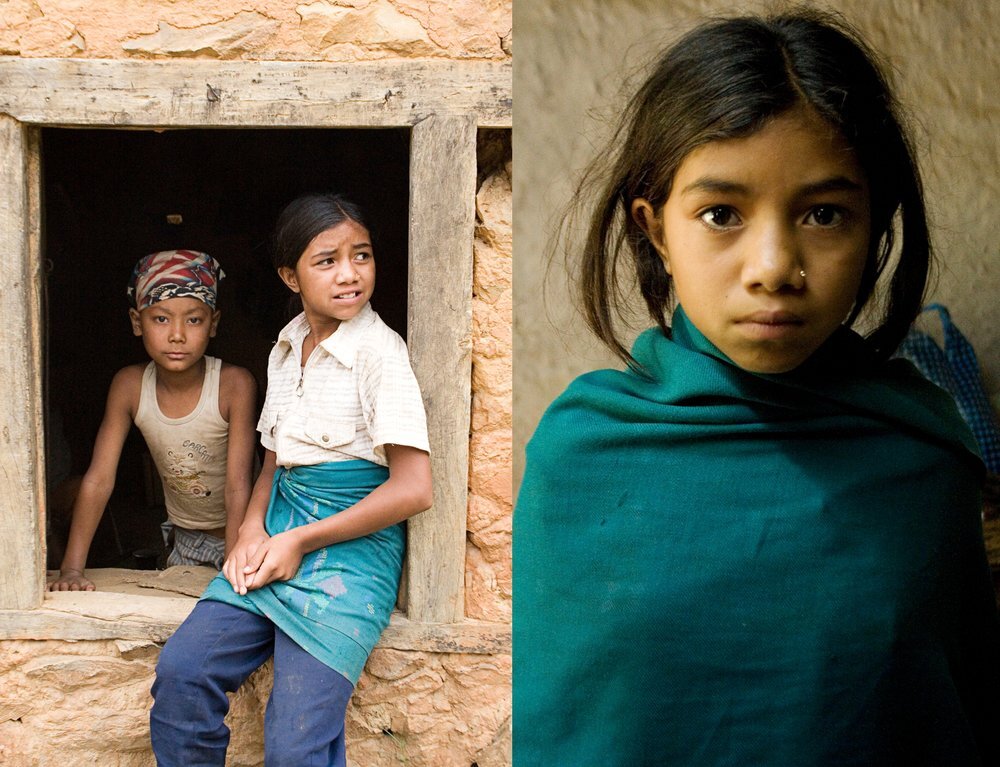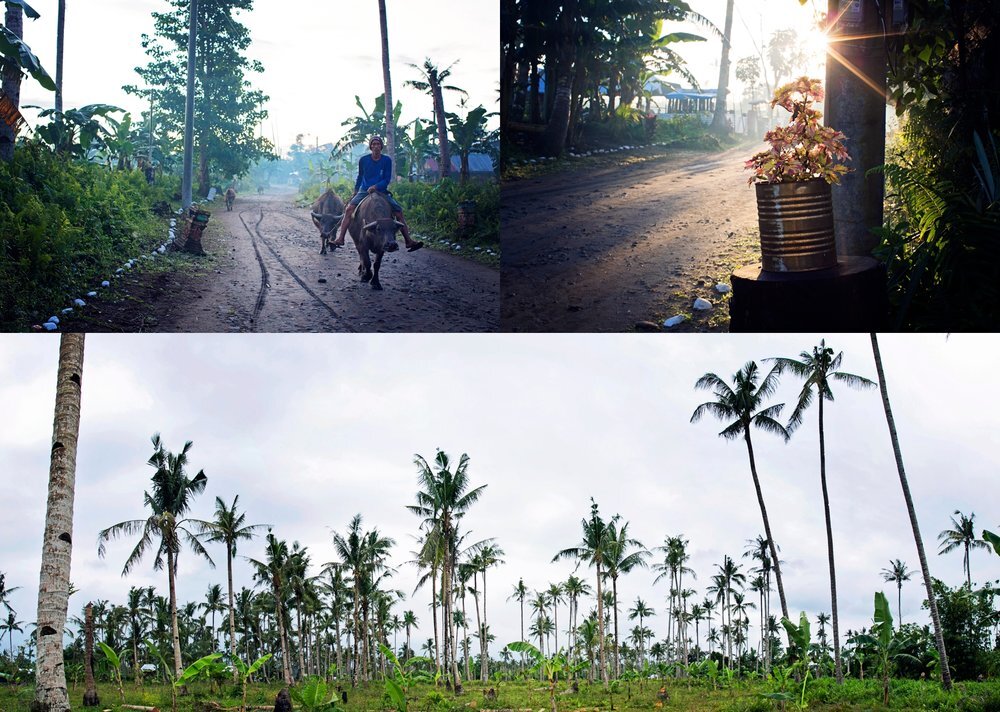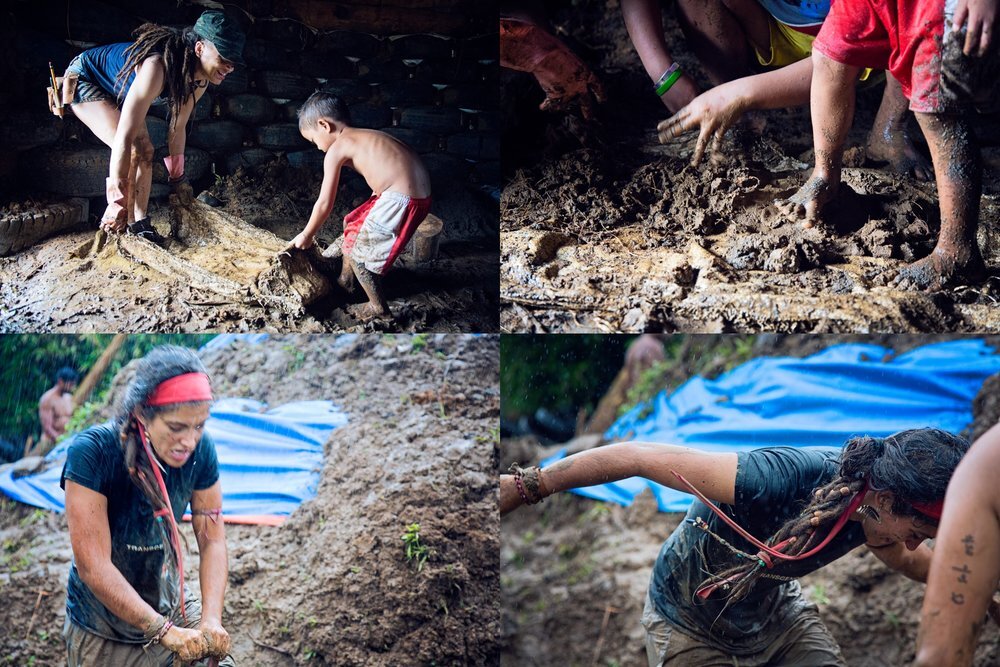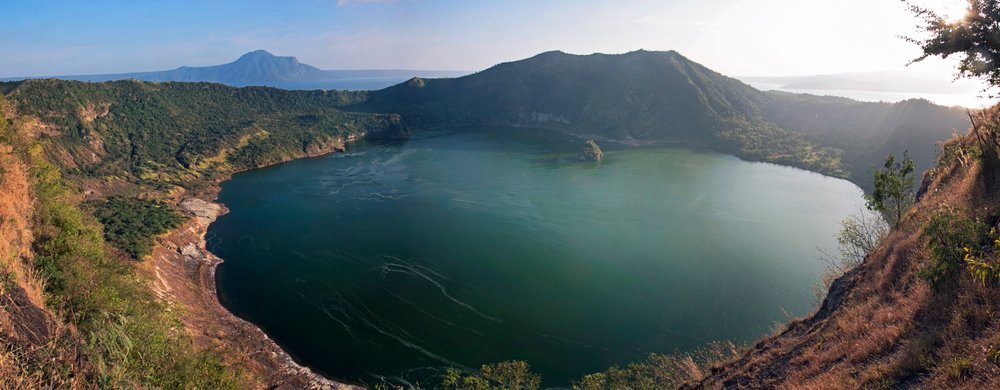Earthship Philippines
An Earthship is a state-of-the-art self-sustainable off-grid building that follows six basic principles, covering six basic human needs by:
Building with Natural and Repurposed materials.
Heating and cooling through thermal mass to create a comfortable living environment.
Using wind and solar energy to create electricity.
Harvesting and filtering rain water to provide drinking and wash water.
Containing and treating its own waste water without external contamination.
Producing its own food in an integrated greenhouse.
In February 2014, the Earthship crew partnered with local NGOs, Earth Village Project and One Block for Batug, to build the “Windship” in the Philippines as a response to Typhoon Haiyan. The first Windship hit was a 10 day build which established an aerodynamic and resilient structure. The Windship design evolved from the Simple Survival Earthship design and functions as a storm shelter and school building for the Barrangay of Batug in Leyte Island.
In February 2015, Earthship joined by a team of local, national and international volunteers returned to Batug for another 12 days to complete the finishes and install the power and water systems. Over the last year the Windship has been used as a storm shelter for the members of the community, demonstrating its ability to withstand the heavy winds generated by typhoons.
There has been much interest by government officials as well as the Department of Education in the replication of the Windship throughout the Philippines in the future, which will help to create typhoon resistant, multifunctional use school/community buildings.
Between both hits, around 80 national and international volunteers joined the crew learning to build and the design of this model specific for this area and purpose. A local group of 15 volunteers, known as the “Windship 15,” joined during both builds and were trained onsite and educated about the principals of Earthships by the Earthship crew.
Along with the completion of the Windship, the team put up a low cost hut to serve as a more affordable building in the community using primarily local resources and recycled materials. The hut was given to a community resident who is also a member of the Windship 15. This hut incorporated materials such as coconut tree lumber, bamboo, adobe, used car tires, recycled glass bottles from local resources. The recipient of the hut, Sandy, plans to use this as a living space for himself and his family while using some of these design principles to help educate and rebuild in the area.
-Earthship Global https://www.earthshipglobal.com/sustainable-development-projects
Nepal

Tibetan Prayer flags over Kathmandu Valley, Nepal.

Monk at the entrance of Chobar Monastery, Kathmandu, Nepal.

Young monks returning from a trip to a city hospital, where they were treated for scabies.

Looking down on the Chobar monastery grounds.

Young monk in English class.

Monks being examined and prescribed medication for scabies. The condition existed for three months, and due to low funding in the monastery, it could not be treated. A volunteer from an international NGO paid the mere $10 USD for all three monks to be treated.

A young monks hands.

The cab ride home from the hospital. Due to air pollution, many cover their face and mouth while in transit in the Kathmandu Valley.

Statue at Pashupatinath Temple.

Left: Looking through the eleven Chaityas (small stupas) across the Bagmati River. Each Chaitya contains a lingam, a symbol of Lord Shiva's creative power. Right: City streets surrounding Pashupatinath Temple in east Kathmandu.

Pashupatinath Temple at the Bagmati River. In Hindu mythology, the river unites life, death and water through Shiva. Beginning the cremation ceremony, fire is carried around the pyre three times, representing the holy trinity of Brahma, Vishnu and Shiva, and the path to the sun. During cremation it is hoped that the soul is released from Samsara, the cycle of rebirth.

Left: The holy temple on the south side of the Bagmati River at Pashupatinath Temple. Access within the structure is allowed by Hindu only. Much of the temple is overrun by monkeys. Right: Child in front of a cremation process.

A homeless child fishing in the Bagmati River. After the cremation process, the ashes are released into the river. The boy's fishing pole is made of rope and a magnet. He is attempting to catch any valuable remains that have not burned.

Left: Local Nepali boy at the temple. Right: A baba, or Sadhu, living within the walls of the temple. During the February/March months, Maha Shiva Ratri, or Night of the Lord Shiva, is held. More than 10,000 Hindu travel from India and Southeast Asia for the festival celebrating the birthday of Lord Shiva.

Left: Women sweep the steps to the highest point of the temple. Right: Woman selling jewelry to tourists. Pashupatinath Temple, Kathmandu, Nepal.

Man in traditional dress makes his way up the temple steps.

Children on rooftop in the village of Chitwan National Forest.

Top: Local transport and storefront. Bottom: Child plays under cart while her mother sells spices above.

City street, Kathmandu.

Waiting for a local bus in Kathmandu.

Left: Young girls on the front steps of their home. Right: Grandfather and grandson in the morning su. Village of Chitwan National Forest.

Tourism in Chitwan includes elephant riding and bathing. Many elephants are captured from the wild and kept in captivity for this attraction.

These animals live in extreme conditions of scorching summer heat reaching over 110 degrees. The elephants primary opportunity for drinking/bathing water is during tourism events. The mother is chained to a post while her calf, tugs on its chain in effort to reach her mother's comfort.

"Old Sange," a guide and porter on the Everest trek, grew up in the Himalayan mountains. He summited Everest twice without oxygen and nearly every major peak on and around the range of Everest.

Pokhara, a small paradise at the end of the Annapurna trek, within the central region of Nepal.

Lukla, Nepal

Left: A small Sherpa village along the Everest trek. Right: Sherpa in traditional doorway.

Children in the school courtyard along the Himalayan trail.

Left: A sherpa boy in the village. Right: Young girl being tapped by her school teacher.

Left: Portrait of a Nepali child in the rural Himalayan countryside. Right: A local on the roadside, the original Everest trek route, where the first trekkers would travel on foot from Kathmandu to Mount Everest.

Left: The Nepali name, "Chaitya," or the Tibetan name, "Chorten," is the basis of offering for Buddhists on the Everest trail. These monuments contain Buddhist relics, and are thought to have been places of worship. Right: Sherpa woman sifts through fresh spices picked on the Himalayan mountainside.

Left: Children's clothes laid out to dry in the front of a traditional Sherpa home. Right: Children play at their home in Lukla, the village with the main airway to access the Everest trail. The flag's symbol is the Tibetan Six Knot, a sign for safe travel.

Porters and trekkers are welcomed into the homes along the trek for rest, shelter and nourishment. Women in the homes offer traditional Nepali cuisine, Dal Bhat, for a small price. For some, hospitality is a main source of income for the Sherpa's who live along the trail. In high regions, rice and other resources cannot be grown, so the porters transport goods from lower ground. Porters also bring goods for the Himalayan tourists/trekkers.

Left: Inside a Sherpa kitchen. Some Sherpas start at a very young age, with an average income of $20 USD per trek, in order to help support their families. The approximately 100 mile trek is completed by Sherpas in a one week span with little rest in between. Many Sherpas cannot afford or do not have access to proper clothing and medical supplies, resulting sometimes in sickness and death. Organizations such as Porter's Progress have formed in effort to give necessary resources to porters on the trail. Right: Children pause from playing in a mud puddle.

Naamche Bazaar, elevation 21,729 ft, is a village supported by Sir Edmond Hilary, after his summit in 1953. This is the end of the road for many porters, as it is the last main village on the way to base camp.

Buddhist stupa on the Everest trek.

After the storm in Kalanki, Kathmandu.

Left: Sangita Dhungana, wife of Rajesh Dhungana, photojournalist and editor of the local newspaper, The Rising Nepal. Right: Sangita prepares dinner in her home. Being well educated but having difficulty finding work, she often mentions her emotions on the oppression of women in her country.

"Do you know ice cream? Ohh, I think you do, so many flavors. Pink, yellow, strawberry. What are the homes like in America? How much bigger are they there? Every Nepali wants to go to America," Swastika, a young girl in Kalanki, Kathmandu. She and her sister, Kritika, dream to study in the United States. Kritika wants to become a nurse.

Private school in the center of Kathmandu. In private schools, which have more funding that government schools, the buildings are often run with the poorest of standards; leaky ceilings, very low to almost no light, and sometimes almost no shelter from the weather outside.

Left: Young children during spelling class. Right: Classroom at a private school. It is necessary for the children to purchase uniforms to be worn throughout the school week. They often cannot afford new uniforms when the others get too small.

Children at lunch in a private school. Kathmandu.

The children in this school must move all the furniture into another room daily, in order to have enough space for each student to eat.

"Life is Nation, not a fashion. Life is duty, not a beauty," Amvita Thapaiya, of Kathmandu. Age 12, Grade 5

Child in the street of Lamatar, a small village in the foothills of Kathmandu Valley where many families cannot afford to have their children attend school.

A brother and sister in front of their home near the bus stop, where the other children wait for transportation to school.

The families with children who do not attend school are taught a trade.

The Communist party of Nepal (Maoist) was founded in 1994 by Pushpa Kamal Dahal (Prachanda), and became the largest party in the Nepalese Constituent Assembly election in 2008. Estimates claim that in 2003 there were approximately 31,500 combatants, 48,000 militia, 150,000 active cadres and 1,000,000 sympathizers. The Maoist guerrilla insurgency, or "People's War" is the cause of over 3,000 deaths.

Through propagation the Maoists have succeeded in recruiting many young, uneducated Nepalese in rural areas throughout the country. This was done through bribing; giving school supplies and materials for survival such as food, water, etc. Alongside recruitment, the rebels destroyed successful local business, bombed bridges in the Himalayan foothills, resulting in the blockading of access to homes. They killed innocent civilians, including school teachers and people on local buses. Although a peace treaty was signed in December of 2006, the rebels continue to act out in rural areas and in the streets of Kathmandu, shutting down businesses, halting public transit and acting out in violence towards people who disobey their commands.

Man in Maoist village

Nepalese take to the streets to protest during the week long celebration of King Gyanendra's birthday. It is rumored and believed by the majority that King Gyanendra ordered the assassination of the Royal Family before him, giving him placement to step in as King.

King Birendra, Queen Aishwarya, and Prince Niranjan, three of the former King's children, his two sisters and another member of the family were killed in the Royal massacre. The country of Nepal mourned their deaths as the one surviving family member, Prince Gyanendra, stepped in. The prosperity of the country declined with the self-appointed new ruler.

Protestors in front of the Royal Palace, home of King Gyanendra.

Kathmandu's streets fill with people in protest, civilians and Maoists alike.

Elections for a Constituent Assembly were postponed in June 2007 and November 2007. As of 2008, the monarchy was abolished and is today a Federal Republic, ending 240 years of royal rule in Nepal. The Royal Palace is now a museum, and Prachanda is the elected Prime Minister.

The Rato Machhendra festival, also known as Bhoto Jatra, is held annually in Patan just before monsoon season. Breaking tradition for the first time in history, King Gyanendra did not appear at the Hindu festival held in 2007 in fear of his life; Prime Minister Girija Prasad Koirala took his place.

Details of the Rato Macchendra festival, Kathmandu.


The arrival of monsoon season.

A night time drive through Nepal.

Kathmandu's silhouette, as the city streets wind down; buses and motorbikes drift into silence. The twinkle of Hindu bells have set with the sun and the calm vibrations of Nepali chatter linger in the distance.

































